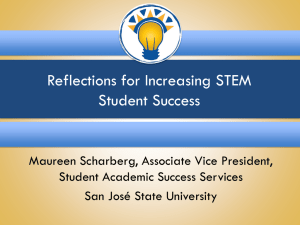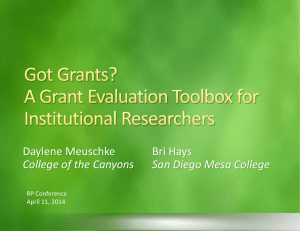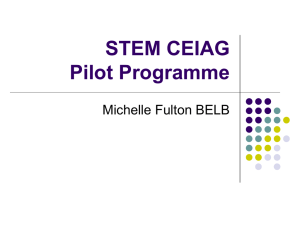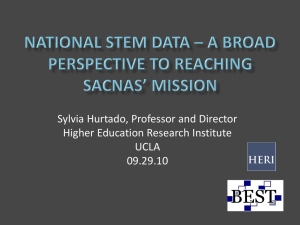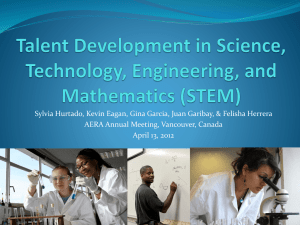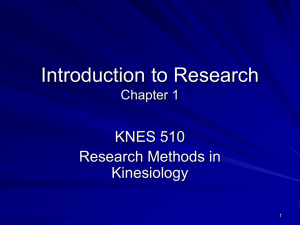Bridging the Transfer Gap and Mitigating Transfer Shock
advertisement
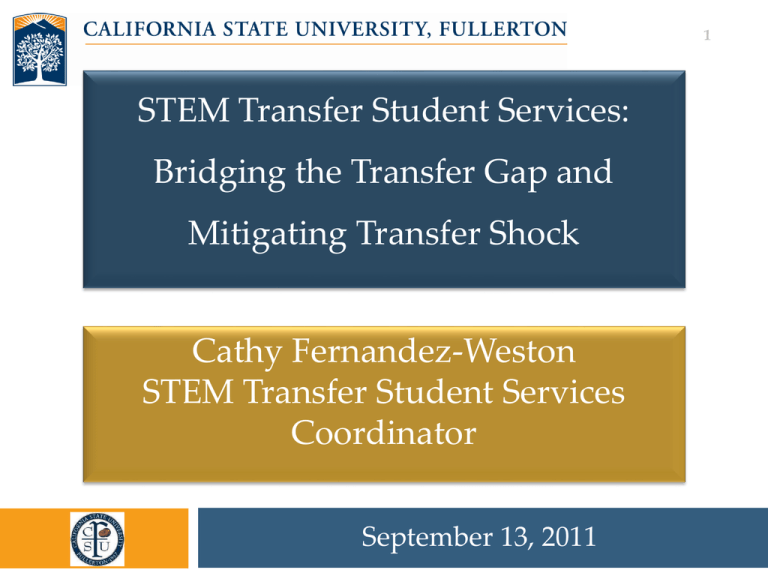
1 STEM Transfer Student Services: Bridging the Transfer Gap and Mitigating Transfer Shock Cathy Fernandez-Weston STEM Transfer Student Services Coordinator September 13, 2011 2 Agenda Who is here today? Explain the transfer path for our STEM Transfers Identify the gaps in the system Discuss how we are bridging the Transfer Gap Discuss how we are mitigating Transfer shock Questions 3 Who is Here? What is your role in the transfer process? What do you hope to gain from this session? 4 5 6 7 Transfer Process Have earned 60 or more transferable semester units. Completed Golden Four Requirements: o Oral Communication, Written Communication, Critical Thinking, and Mathematics/Quantitative Reasoning. GPA: based on the number of applications received and will not be determined until after the filing period. o Local GPA 2.3 vs. out of local Area GPA 2.7 in 2010. Good standing at the last college or university attended. CSU Fullerton is an impacted campus: o Thus departments can add additional requirements in the future. 8 Transfer Process STEM Majors at CSUF: o Natural Sciences and Mathematics: Biology, Biochemistry, Geology, Math, Physics. o Engineering and Computer Science: Civil, Computer, Electrical, Mechanical Engineering and Computer Science. All require a sequence in Calculus. Most require some BIOL, CHEM and PHYS. All courses must Articulate. 9 Gaps at the Community College Not aware of potential STEM Careers. Not aware of the requirements for general transfer or STEM specific transfer. Expect to finish degree in 2 years once they transfer. Lack of effective study habits. Wrong courses taken or No articulation agreement. Lack of STEM community. 10 Gaps at CSUF Wrong courses taken or No articulation agreement. Lack of Understanding of CSUF policies: o Mandatory Advising o Satisfactory progress (i.e. Probation, Disqualification) o Course withdrawal policy o Repetition of course policy Lack of effective Study habits. Lack of experience with scholarly community. 11 TEST: UP Program National Science Foundation - Science, Technology, Engineering, and Mathematics Talent Expansion Program (STEP): Total Award: $2,500,000 over Five Years Overall Goals Increase the number of STEM transfers to four-year universities and colleges . Increase the number of STEM AA degrees and baccalaureates . Focus Enhance STEM academic advisement and student engagement . Increase student success in entry-level mathematics and the science courses. Learn how to increase student success in entry-level mathematics and science courses via surveys and by appraising student preparedness from transcript analyses. Explore new tools to improve retention in the major-SI, EWS, Research Experience, etc. 12 Administrative Structure 13 Strategies and Programs Strategy 1: Improve counseling, guidance and mentoring opportunities and improve information and knowledge of STEM careers for Mount San Antonio College and Santa Ana College STEM students and potential STEM students. Coordinator for STEM Transfer Student Services (Cal State Fullerton): Full-Time CSUF Position; Travel to partner colleges to provide advisement for STEM students, work with faculty and half-time counselors to implement study campaigns, assist with students at risk, and organize presentations and events . STEM Counselors/Advisors (Mount San Antonio College and Santa Ana College): Half Time Counselors/Advisers at each college; provide advisement for STEM students, work with faculty and CSUF Coordinator for STEM Transfer Student Services to implement study campaigns, assist students at risk, and organize presentations and events. Web Sites and Video Presentations (Mount San Antonio College and Santa Ana College): Improve web site information content and linkages to STEM academic programs, articulations with four-year institutions, events, career tracks, internships, and research opportunities. 14 Strategies and Programs Strategy 2: Develop support networks, including facilities and programs to develop learning communities, for STEM students at Mount San Antonio College, Santa Ana College, and Cal State Fullerton. Peer Group Program for Transfers (Cal State Fullerton): Hiring of peer advisers as peer mentors to oversee learning communities made up of incoming CSUF transfer students majoring in mathematics, the sciences, and other STEM fields; special orientation and advisement events for these new CSUF transfer students Faculty Mentoring Programs (Mount San Antonio College and Santa Ana College): Mentoring of non-STEM majors with promise or interest in mathematics, the sciences, and STEM careers; visits to research labs, career days, professional seminar presentations Science Resource and Study Centers (Mount San Antonio College and Santa Ana College): development and improvement of science resource and study centers, including tutoring, access to specimens, books, maps, computer resources 15 Strategies and Programs Strategy 3. Improve student engagement and learning in pivotal mathematics and science introductory discipline courses Development and Implementation of Supplementary Instruction (Academic Excellence) Workshops (Mount San Antonio College and Santa Ana College; Cal State Fullerton): implement Supplementary Instruction workshops associated with selected, key math and science courses using peer facilitators; work to establish a regional collaborative to provide a forum for discussing approaches and determine best practices that improve student success in these courses. Tutoring Programs (Mount San Antonio College and Santa Ana College): using peer tutors, expand tutoring programs and homework assistance in improved science resource and study centers; work with faculty, the Coordinator for STEM Transfer Student Services, and Counselors to encourage students to seek tutoring assistance. 16 Strategies and Programs Strategy 4. Develop a teaching intern program to improve the pedagogical and mentoring skills of Cal State Fullerton math and science graduate students interested in community college teaching careers Teaching Intern Program (Cal State Fullerton, Mount San Antonio College, and Santa Ana College): place two Cal State graduate teaching interns each year with faculty mentors at both Mount San Antonio College and Santa Ana College where they will be hired as part-time faculty and given teaching assignments or serve as workshop facilitators; with additional funding, interns will spend time advising, counseling, and serving as mentors to students. 17 TEST: UP at Mt. SAC & SAC Collaborate campus wide with Deans, faculty, administrators, counselors and students. STEM specific transfer counseling & advising. STEM Education: STEM Planning Committee STEM Video series, STEM workshops, and STEM Clubs STEM Week STEM CSU Application workshops STEM Scholars program. STEM Supplemental Instruction. Intern Project. 18 Other Community Colleges STEM major pre-transfer Advising. Campus Lab Tours. NSM & ECS Majors presentations. College Outreach Representative. 19 STEM Transfer Student Services Outreaches to NSM and ECS transfer students only. o Target population of about 500+/- students per year. o Serves about 30% of these students per year. Services Offered: o Transfer Student Orientations o Peer Mentoring o NSM/ECS Early Warning System o STSS Book Scholarships o STSS Mini Grants 20 Transfer Student Orientations University Specific transfer student orientations. o Mandatory for all transfers in their first year o Option of face-to-face at a cost of $60 full day/ $45 half day or online at not cost to the student. College specific transfer student orientation. o Mandatory face-to- face advising for all incoming transfers in NSM each semester. o Hold placed on student account o No cost to student 21 Peer Mentoring Peer Advisors: o STEM Majors- NSM and ECS only. o Transfers or successful juniors/seniors. Training: o On CSUF university , department policy and resources. o On mentoring relationships. Case load: An average of 100 students. o Only serve students their first year on campus. o Document every interaction with mentees. Learning communities. o Workshops. 22 NSM/ECS Early Warning System Electronic progress check system. Early Intervention- 3rd or 4th week in the semester. Incoming students only (Freshmen or Transfer). Faculty Feedback : o o Quantitative- Grades or attendance Qualitative- Comments Intervention: o o Meeting w/ Coordinator Specific and intentional intervention 23 STSS Book Scholarships Incoming NSM & ECS Transfer students only Requirements include: o STSS Scholarship Application o Peer advising (3 meetings) o STSS Involvement in workshops o STEM Student Organization participation o Full time enrollment and 2.5+ GPA o Essay and Resume 24 STSS Mini Grants STEM Transfer Student Services (STSS) Undergraduate Research Mini Grants opportunities was to enrich scholar’s undergraduate experience at CSUF with the goal of improving retention in the major and enhancing student success Scholars were required to secure a faculty research mentor and work with them on a project over a period of one semester. As the research process differs by academic department, each STSS Scholar collaborated with his/her research mentor and the STSS coordinator to ensure a successful research plan and project. STSS scholars received a $200 book scholarship for participating in research with the faculty mentor. A project budget of $1,000 dollars was awarded to the faculty research mentor for working with the scholar. STSS Scholars attended at least one academic enrichment seminar each month and scholars also met twice a semester with the STSS coordinator to discuss progress on the project. Finally participants were required to submit an essay that summarized their experiences and lessons learned. Scholars and faculty mentors were also asked to complete an online survey requesting information about there experience in the program to evaluate the impact and effectiveness of the program. 25 Additional Projects Supplemental Instruction in STEM courses NSM Transcript Analysis Pre Transfer Survey Post Transfer Survey 26 Questions? 27 Contact Us Cathy Fernandez-Weston Coordinator, STEM Transfer Student Services College of Natural Sciences and Mathematics California State University, Fullerton 800 N. State College Blvd, Fullerton, CA 92834 657-278-3769 Phone/ 657-278-1263 Fax cfernandez-weston@fullerton.edu http://testup.fullerton.edu/
